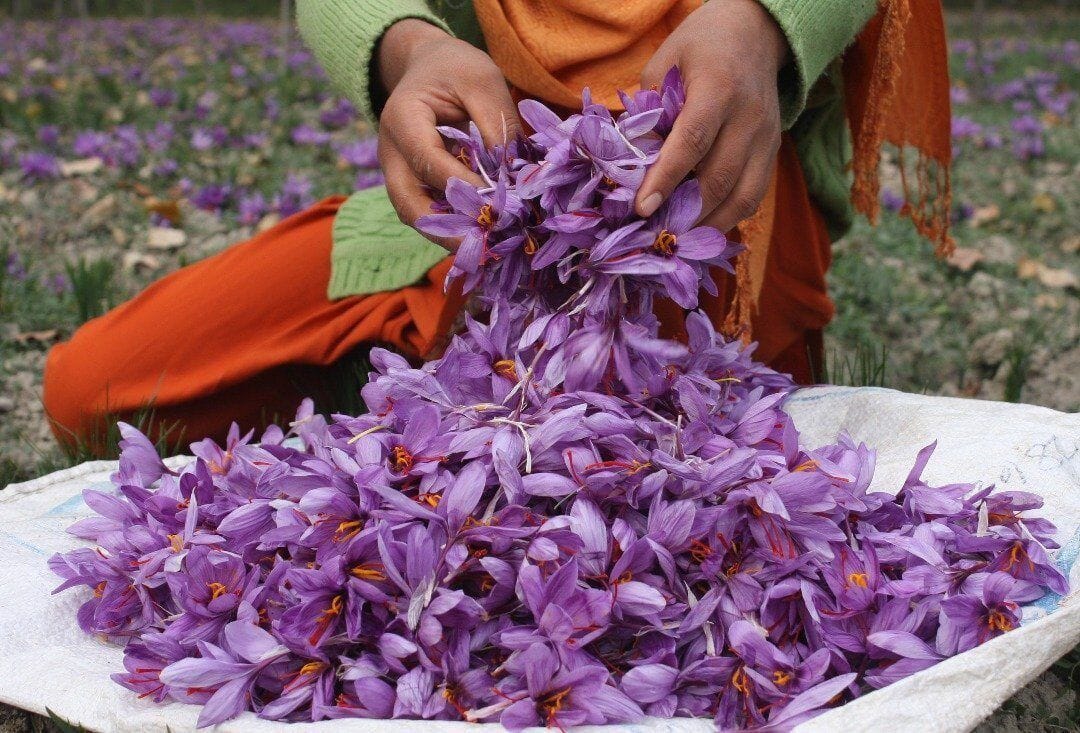Saffron Crocus: The Flower Producing The World's Most Expensive Spice
Saffron and the Flower From Which it is Derived
Saffron is known the world over for its intoxicating, warm, earthy flavor—somewhat bitter and somewhat sweet. It is also known for its ability to produce a rich color that ranges from soft golden to bright orange. Despite its popularity around the world by both professional and home chefs, as well as those who take part in natural fabric dying, most individuals know little about the flower that produces our beloved saffron.
What is the flower that saffron comes from?
Saffron is derived of the Crocus Sativus, or the “saffron crocus”, as it is commonly called. The saffron filaments used to add flavor and color to dishes throughout the world are the female reproductive part of the flower, the stigma. These striking crimson threads are surrounded by six delicate purple petals and immediately next to three bright yellow stamens, or the male reproductive part of the crocus.
How is saffron harvested from the crocus flower?
Each saffron crocus bulb, or corm, produces just a single flower and each flower contains only three saffron threads. When the flowers bloom in the cool, autumn months, harvest must happen quickly. Flowers must be plucked from the earth in the morning, prior to high-noon, to avoid wilting and ensure optimal quality. Further complicating the matter, the plants are only in bloom for a couple of weeks.
Once the flowers are gathered, the fine stamens must be removed carefully to avoid damage. To do this, they are stripped from the flower by hand, one at a time. Once removed, they must immediately begin the drying process to maintain the integrity of flavor and coloring properties.
Can I grow saffron flowers?
Whether or not you will be able to grow the saffron crocus is dependent on numerous variables. Crocus Sativus grows well in areas with mild climates and thrives in wet, yet well-drained clay or silty soil with a neutral PH. Of course, even if you reside in a colder climate with less-than-ideal soil, don’t give up hope. You will still be able to cultivate the saffron crocus, you’ll simply need to provide extra care—amending the soil and ensuring the bulbs are not left to overwinter in frozen ground. This can be achieved by utilizing a greenhouse, digging them up and storing them in a cool, dry location after they are done blooming, or planting them in containers and bringing them prior to the first frost. Keeping in mind the sheer quantity of flowers you would need to obtain enough stigmas for a single meal or batch of fabric dye, you’ll want to first consider if the effort and space required is worth it to you.
As you can see, the saffron plant is one that is incredibly delicate and could even be deemed finicky. The conditions for growth are uncompromising, the window of opportunity for harvest is incredibly small, and monotonous, manual harvesting requirements are tremendously demanding of time and energy. These variables all contribute to the high price of saffron. Add in the fact that it takes an area the size of a football field to produce the 70,000 crocus flowers required to obtain a single pound of the spice, and it’s no wonder that pound-for-pound, it is the most expensive spice in the world.
Shop Our Selection Of The Best Ethically Sourced Global Spices & Herbs
Looking for a beautiful saffron varietal to enhance your favorite recipes or use as fabric dye? Try these all-red saffron filaments from Afghanistan.
How do you plan to use your saffron? As a dye for fabric? To flavor your favorite dishes?







Slofoodgroup
Author